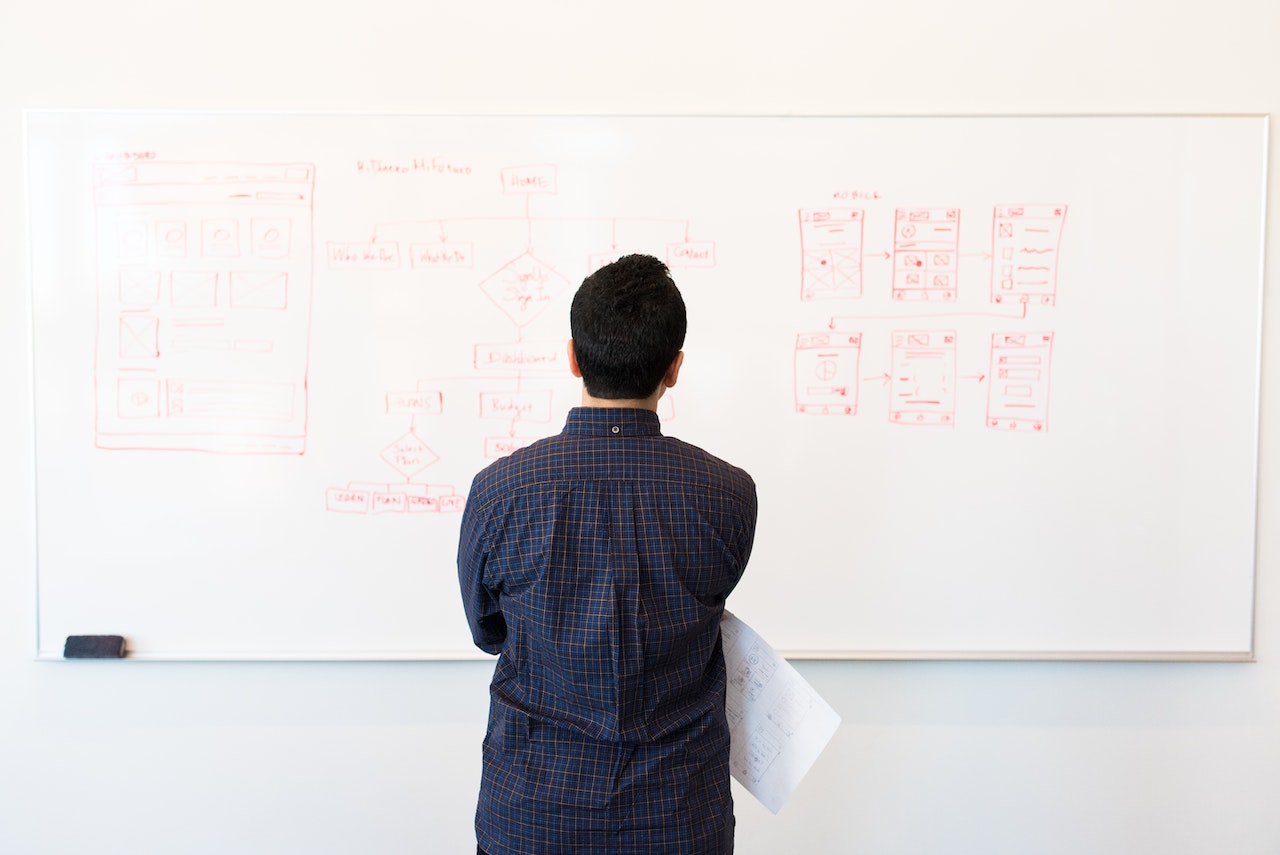What web design processes does a web designer need to be able to do?
Published

According to a study by Carleton University, it takes visitors about 50 milliseconds to form an opinion about a website. Web design plays a big role in shaping the opinions of website visitors. When users visit a website, they get a first impression of the website operator's company. Good web design can, among other things, help promote trust and extend website usage.
If you want to acquire new skills or expand your existing skills, Skillshare is for you. Please click here to access Skillshare's learning platform and gain new insights into a wide variety of topics.
To reap the benefits of good web design, you need to start with good web design processes. What web design processes does a web designer use to create a good web design project? This guide highlights the five components of web design and helps you understand the intricacies of the web design processes.
According to a study by Carleton University, it takes visitors about 50 milliseconds to form an opinion about a website. Web design plays a big role in shaping the opinions of website visitors. When users visit a website, they get a first impression of the website operator's company. Good web design can, among other things, help promote trust and extend website usage.
To reap the benefits of good web design, you need to start with good web design processes. What web design processes does a web designer use to create a good web design project? This guide highlights the five components of web design and helps you understand the intricacies of the web design processes.
What is web design?
Web design is the design of websites on the Internet. Unlike web development, the focus is on user experience rather than software development. Web design includes designing websites for desktop browsers, tablets and mobile browsers.
The professionals who deal with web design are called web designers. They deal with the layout, appearance and content elements of a website. Some aspects of a website's visual content that web designers work on are images, color palettes, and fonts.
What are the 5 components of web design?
There are some essential elements of web design that make a website stand out and serve the purpose for which it was created. Components of web design include navigation, content, visual design, conversion, and information accessibility.
Navigation
The website design must be easy to navigate. This also means that the website's menu items should be easily accessible and that the user should know how to find the information they are looking for without difficulty. This is why a sitemap is used to make it easier to find things on the website. The menu should be interactive and functional, with a clear system for arranging content.
Contents
Content is very important for a website because it plays the main role in attracting new customers through search engine optimization (SEO). For this reason, a website must have easy-to-read, informative and concise content such as: B. Blog posts. When content is planned using a content marketing strategy, it makes your website more popular, effective and engaging.
Visual design
Visual design is also an important part of website design because most people are visually oriented. When a mobile development team uses great graphics, their website becomes more attractive to users.
Good visual design shows visitors that a website is professional and trustworthy. The use of animations, scrolling text, and Flash intros should be kept to a minimum as these can visually overwhelm users and slow down your website loading time.
Accessibility of information
In most cases, website visitors don't have the time to look at an entire website to see what it offers. Rather, they try to find a few details such as addresses or telephone numbers. For this reason, important information must be placed where it is easily accessible.
Visitors may become frustrated and go to another website with a similar offer if they cannot find what they are looking for on your website. Information accessibility is important because it could cost you potential customers who also have the opportunity to become loyal repeat customers.
Conversion
The final essential element of website design is conversion. Companies use their websites to promote their goods and services. When potential customers visit a website, they have the choice to buy there or go somewhere else. Web design must promote awareness of a company's services to help convert potential customers into buyers.
What is a web design process?
A web design process is a series of design steps that cover different areas such as: B. User interface (UI) design, user experience (UX) design, graphic design and search engine optimization (SEO). It covers the different phases of creating a functional website.
In some cases, the web design process includes up to seven steps. However, depending on the website owner's needs, fewer steps may be required. It is important to follow this web design process in order and this will be discussed in the following section.
What are web design processes good for?
Web design processes are good for multiple purposes such as: B. to save costs during the web design process. Web designers can avoid problems later in development and shorten project duration by following these processes. Other reasons for using web design processes include the following
- Search engine optimization (SEO) . Failure to follow a web design process will negatively impact the visibility of your website. It impacts how content is published through content management systems, which inadvertently impacts search engine rankings and indexing.
- Trust . The appearance of a website can affect how visitors perceive the website. This, in turn, affects how much confidence they have in entering their personal information on a website and reduces their willingness to give an online company their money in exchange for services. A poorly designed website appears dubious to visitors.
- Audience reach . The goal of a business website is to reach the target audience and convert them into customers willing to buy. If the website is unable to reach the right audience, this purpose will be defeated. To ensure the website reaches the right audience, it is important to follow a web design process.
What are the 5 steps of the web design process?
Web design involves several phases, from the discovery phase to the launch phase. The web design process begins by discussing a company's needs, the client's plans, and all the requirements necessary to create an excellent web design. For the purposes of this guide, the entire web design process will be broken down into five critical steps and discussed accordingly.
Brief
The briefing is the first phase of the web design process. It begins with a conversation between the web design team and the customer. This phase is one of the most important because the result of the conversation sets the pace for the entire process. Everything discussed in the brief determines the team's design checklist and sets a goal for the end result.
In the initial phase, the development team collects the necessary information to begin the process. It can also express its concerns about the design the client wants and the recommended changes it wants to make to it.
planning
Next comes the planning phase. The web designer begins by defining the project scope plan, known as scope creep, and an overarching strategy. This project scope plan includes all tasks to be completed and expected correspondence with the business owner. It contains the milestones and a realistic schedule that must be adhered to until the project is completed.
The planning phase also includes research work. The web designers brainstorm and develop design inspirations to meet the client's needs. Before we get started, the team develops a mockup and an initial layout of the website pages. It looks like a bare website because it contains no design features. The web design team also creates a map of the location to ensure the website is accessible.
Draft
The design phase involves testing design styles, features, and design elements to create an aesthetically pleasing and functional web design. She starts with research to give the team the creativity and inspiration they need. The team uses the design phase to analyze the company's brand identity as well as competitors' designs to determine where improvements are needed.
These professionals examine the brand elements such as the logo or mascot that can help identify the company. They also check the color scheme as it is an important component of web design. The web design team can also design visual elements such as controls, buttons, and icons and create a visual style guide.
Development
In this phase, the design team implements the design into CSS/HTML templates and converts CSS/HTML templates into CMS-based websites. They also add the functional unit before starting the testing process. The tests check whether the website complies with certain web standards. In this phase it is necessary to check whether the code is well structured, optimized and properly documented.
This means that the website has to adapt to the screen sizes of different devices, making it a responsive design. Next, the designers check the performance of the website by optimizing the website. This is crucial as it relates to conversions and user experience. If the website loads slowly, users are likely to abandon it. This defeats the purpose of having a website to promote a business.
introduction
In the launch phase, the website is ready for the public. The five-stage design process is almost complete. In this final phase, the design and SEO team reviews and tests the website repeatedly to ensure everything is working well. The client must provide consent at each stage to ensure the final design meets their expectations.
Steps in this phase include functional, security, performance, and usability testing. The design team transfers the website to the client's server and integrates all the snippets such as email marketing tools, Google Analytics code and ads. At this stage, the client's design team may need to be trained on how to use the website.








